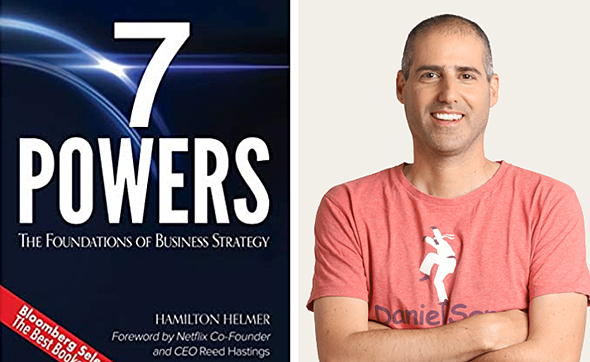
BiblioTech
CTech's Book Review: 7 ways to transform your organization and win big
Assaf Eisenstein, Co-Founder and President at Lusha, shares insights after reading "7 Powers: The Foundations of Business Strategy” by Hamilton Helmer
Author: Hamilton Helmer
Format: Book
Where: Home
Summary: With over 40 years of business experience in multiple industries, Hamilton Helmer breaks down how certain organizations revolutionized their space, broke down existing norms, and became industry leaders. Helmer identifies seven "powers" that truly make a difference in positioning an organization and give it an edge over all its competitors. The book has the power to transform the way business leaders look at strategy. It's not just about the obvious - creating a good product and marketing it to the masses - it's about identifying where you need to invest your efforts in a way that sets you apart from your competition. His seven strategies make you reexamine where your organization's strengths lie, and if it's time to make significant changes. Important Themes: The important themes are obviously the actual “powers” that successful companies have, so let’s break them down.- Network economy - These companies have their power come from being able to organize a large number of people and connections, and generate significant value for the users. Social networks are the obvious example, but also Uber/Lift.
- Scale economy - Certain businesses use their purchasing power to buy materials in bulk and reduce costs. That means the scale of their operations gives them a direct advantage over smaller players. It could also be that a technological advantage gives you the option to scale quickly. For example, Netflix was able to scale via streaming and completely destroyed Blockbuster.
- Counter positioning - Probably one of the most popular examples of new players entering the game and positioning themselves as the opposite/better/more innovative version of the current market leader. This puts the market leader in a position of having to either completely reinvent themselves, or maintain the old ways of doing business and risk becoming irrelevant.
- Switching costs - creating a new way of calculating the cost of business and a company’s pricing model. Back in the day, you would pay your phone bill by the minute. These days per-minute charges are irrelevant and the model has shifted entirely to limitless use packages. Having a new pricing model can turn the entire market upside down.
- Branding - Probably a more obvious one, but one cannot ignore the power of branding. But real branding isn’t about spending a lot of money on commercials or covering Facebook with ads. It’s about creating a known identity, having a strong connection with your customers, and being able to raise prices and still dominate the market because you are known and loved. Apple is probably the best example of impeccable branding.
- Cornered resource - This is the type of asset that whoever has it, has the advantage. Helmer explains how Pixar’s original team consisted of a group of superstars that together were able to produce pure magic. This can be applied to specific individuals whose presence, skill, and knowledge, can make a huge impact. And when they move elsewhere? They take their talent with them.
- Process power - Market leaders have years and years of experience, which means they can process complex processes in a streamlined and efficient way. It creates a major advantage because new players can’t just start from scratch and expect similar results.
The seven powers allow you to approach business strategy in a much more nuanced way, and really understand the essence of your advantages as opposed to your competitors.
It’s also about how to maintain these powers over time.Related Stories
Deeply understanding a company’s power (or multiple powers) can refocus the entire company, and should directly impact your bottom line.
I particularly enjoyed Helmer’s breakdown because it offered a new perspective on how we can do things around here at Lusha. It helped me also looking at the market in a new way, trying to find those seven powers in other market leaders and in emerging players. Who Should Read This Book:Considering the book answers questions about company strategy and vision, it most naturally targets C-level executives. But beyond this obvious readership, it’s an enjoyable read for tech people and business-minded folks of all walks. Helmer masterfully changes the perspective of how you evaluate companies, making it valuable not only to organizations but also to trendsetters and business-minded individuals. market, and that’s valuable insights not only to all levels of the organization, but also many different departments.
